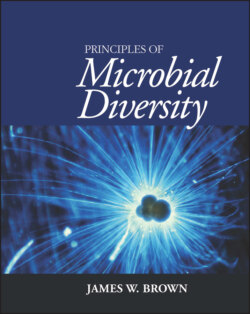Читать книгу Principles of Microbial Diversity - James W. Brown - Страница 48
Obtaining sequences experimentally
ОглавлениеThe commonly used method to obtain DNA for sequence analysis is the polymerase chain reaction (PCR). PCR amplifies genes exponentially—a single molecule of a gene, embedded in the rest of the genomic DNA, is specifically amplified to up to a million molecules in just a couple of hours. In a PCR, three steps (denaturation, primer annealing, and DNA polymerization) are cycled over and over, each time doubling the amount of the specific DNA fragment (Fig. 3.3).
Figure 3.3 The polymerase chain reaction (PCR). doi:10.1128/9781555818517.ch3.f3.3
The PCR product DNA is then sequenced (i.e., its nucleotide sequence is determined), often using the same oligonucleotide primers that were used in the PCR. Sequencing involves denaturing the DNA, annealing an oligonucleotide primer, and extending from this primer with DNA polymerase in the presence of deoxynucleoside triphosphates (dNTPs) and small amounts of chain terminator dideoxynucleotides (analogs of dNTPs from which DNA polymerase cannot continue extending) (Fig. 3.4). Usually this process is carried out by a commercial service rather than in a research lab. A fluorometer at the bottom of the gel or end of the capillary detects the termination dyes as they run past. The connected computer collects this data and reads the sequence from the pattern of peaks (Fig. 3.5).
Figure 3.4 Chain termination sequencing. doi:10.1128/9781555818517.ch3.f3.4
Figure 3.5 Example sequence data from a DNA sequencing reaction. doi:10.1128/9781555818517.ch3.f3.5
Each reaction typically yields 500 to 1,000 bases of reliable sequence data, so it is usually necessary to use several primers spaced along the length of the molecule to get the complete sequence of an rRNA gene. It is also usually expected that both strands of the DNA will be sequenced for confirmation.
